#barfield legacy
Photo





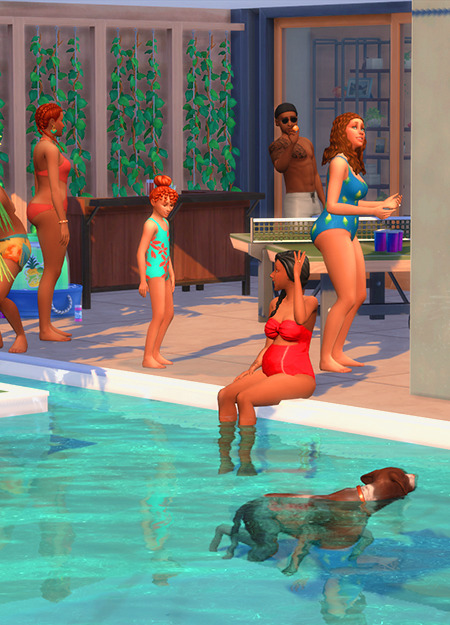
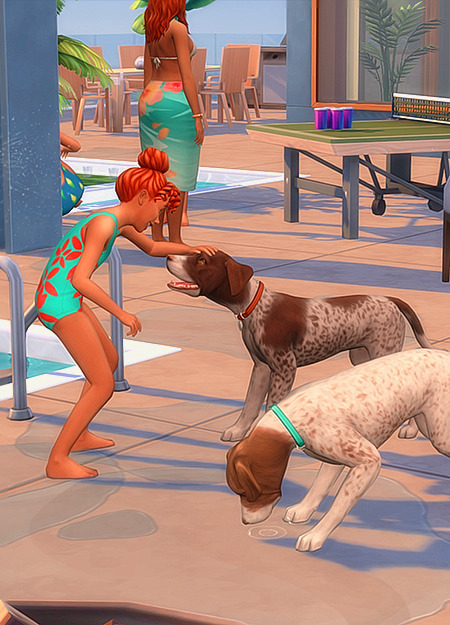

summer fun ☀️
#that stinker barley lol#jumping after his momma while she's back floating#ts4#the sims 4#sims 4 gameplay#ts4 vanilla#ts4 vanilla gameplay#simblr#houston: g9#koa houston#johanna houston#barley & bale#the donohue's#the barfield's#pocketfullofsimshine#the houston legacy
138 notes
·
View notes
Text

Barfield Legacy: Introductions
Name: Tara Barfield
Pronouns: She/They
Sexuality: Bisexual
Aspiration: Soulmate
Traits: Bookworm, Overachiever, and Loner
Additional Traits: Neat, Romantic and Loyal
Likes: Alternative and Metal music, Programming, Knitting, Video Gaming, Gardening
Dislikes: Acting, High Energy Sims, Spirited Sims, Potty Humor, and Complaints
Career(s): Retail (Part Time) and Handyperson (Part Time)
3 notes
·
View notes
Text
Tapped by Legacy by: Brittaney Barfield
Tapped by Legacy by: Brittaney Barfield
Published by: Self published
I have read a lot of good self published books. Unfortunately, this was not one of them. And it bites because I really wanted to like this book. The premise was great but it wasn’t able to be carried through.
The characters were flat. The main character is supposed to be smart but makes decisions that show she’s lacking at least a little critical thinking skills.…
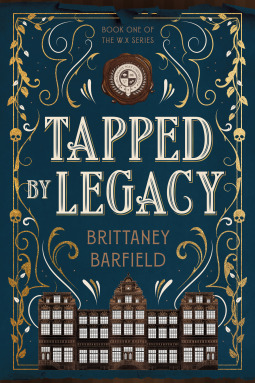
View On WordPress
0 notes
Photo



14 notes
·
View notes
Photo

Meet Tony Barfield. Tan, hunky, covered in tattoos, and a sweetheart. Tony likes to go on early morning jogs, then come home to his tiny apartment in the city to make a delicious breakfast. He’s currently a host at a restaurant and works the night shift.
2 notes
·
View notes
Text
Daily News Update for March 25th, 2022
Daily News Update for March 25th, 2022
https://murfreesboro.com/barfield-park-is-expanding/
https://murfreesboro.com/silver-alert-issued-for-james-cox/
https://murfreesboro.com/ribbon-cutting-for-legacy-furniture-mattress/
https://murfreesboro.com/100th-student-to-graduate-from-lavergne-high-school-early-college-at-motlow-program/
https://murfreesboro.com/mtsu-historic-elevation-to-elite-r2-high-research-activity-status/
https://murfr…

View On WordPress
0 notes
Text
This week architects paid tribute to high-tech pioneer Richard Rogers
This week on Dezeen, we covered the news that Pritzker Architecture Prize-winning architect Richard Rogers passed away aged 88.
Rogers, who was one of the world's best-known architects, passed away in his home on 18 December. Tributes were paid to the "superstar" architect by creatives including Peter Barber, Charles Holland and Julia Barfield.
In his tribute, fellow Pritzker Architecture Prize-winner Norman Foster, who Rogers co-founded his first studio with, described him as his "oldest and closest friend".
Richard Rogers' top 10 architecture projects
Following Rogers' death we took a look at 10 of his most influential projects including the Centre Pompidou (pictured), Lloyd's building and the Millennium Dome.
In an opinion piece dicussing his legacy, critic Catherine Slessor said that "Rogers' star burned especially furiously" and that "a point of light had disappeared from a constellation of architects that shaped the last 40 years".
Valley by MVRDV photographed near completion in Amsterdam
In other architecture news, Dutch studio MVRDV revealed images of its Valley high-rise scheme that is nearing completion in Amsterdam's financial district.
The development, which is set to complete next year, is composed of three conjoined buildings linked podium to recreate the shape of a valley.
Zaha Hadid Architects creates multi-level city park in Cyprus' capital
In Cyprus, UK studio Zaha Hadid Architects unveiled a public park that runs alongside the historic Venetian walls of Nicosia.
Named Eleftheria Square, the multi-level public space was built within a section of the dry moat that surrounds the oldest part of the city.
McDonald's opens "UK's first net-zero restaurant"
This week also saw a pair of buildings in the UK claiming to be net-zero firsts.
Fast-food chain McDonald's opened "the UK's first net-zero restaurant" in Shropshire, while in London Room2 opened the "world's first whole-life net-zero hotel" in Chiswick.
Dezeen's top 10 house extensions of 2021
We countinued our review of the year this week by looking at the house extensions that turned heads in 2021.
We also rounded up the 10 non-fossil-fueled vehicles, including a coupe designed by Virgil Abloh and an electric car by Heatherwick Studio, that made an impact this year.
Carlo Ratti and Italo Rota design Italian home around 10-metre-tall tree
Popular projects this week included a house designed by Carlo Ratti and Italo Rota around a ten-metre-tall tree, a monolithic church in an Italian hill top town and a house in Japan that includes an Aztec-informed pyramid.
Our lookbook this week focused on eclectic living rooms with statement rugs.
This week on Dezeen is our regular roundup of the week's top news stories. Subscribe to our newsletters to be sure you don't miss anything.
The post This week architects paid tribute to high-tech pioneer Richard Rogers appeared first on Dezeen.
0 notes
Photo
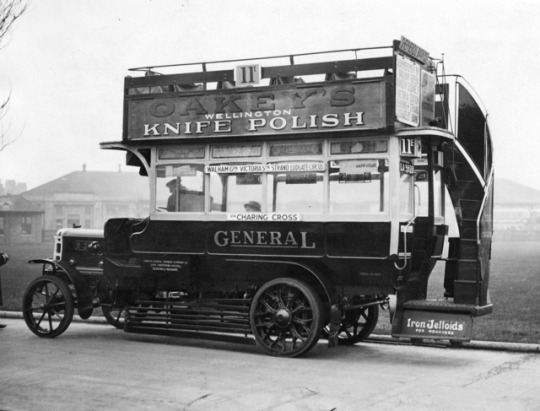
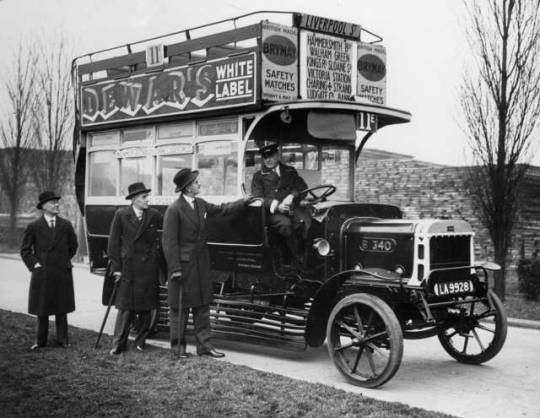







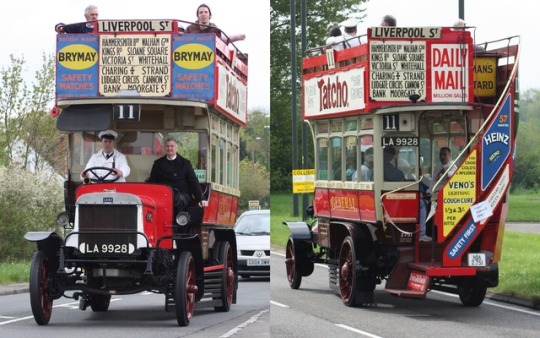
That time Vancouver brought over a double decker bus from London, England. It was for the 1936 Golden Jubilee celebrations, and remarkably, omnibus B340 (LA 9928) is one of the few remaining examples that survive to this day.
The first three photos above were taken in Chiswick, London, and photos 2 and 3 show the men who were believed to be responsible for negotiating the loan of the bus, Mr. B.E. Adams (role unknown, possibly with London Transport?), the Agent-General for British Columbia Mr. W.A. McAdam, and the governor of the Hudson's Bay Company Mr. P. Ashley Cooper. The Lethbridge Herald ran the second of these photos on page 5, January 06, 1936, likely taken in late 1935, with the following caption:
One of the two remaining pre-war omnibuses of the London passenger transport board to survive the great war is to be loaned to the city of Vancouver for their jubilee celebrations next year. Mr. W. A. McAdam (LEFT) acting agent-general for British Columbia, and Mr. P. Ashley Cooper, governor of the Hudson's Bay Company, inspecting the old war-time bus at the Chiswick (London) garage of the London passenger transport board.
The number of remaining pre-war omnibuses has actually gone up since then. It looks like there are now at least 4 surviving models, though I don’t know if they can all boast pre-war manufacture dates; B43 (1910), B340 (1911), B1609 (1911), and B2737 (1914, but I’m unsure of the month). A fifth bus, B214 LA9802 (1911) has an original chassis, but the engine, wheels and front axle came from the remnants of two other B-Types, while the body was found in a Sussex garden that had originated with an East Surrey B-Type built in 1912. As of 2014, it looks like B214 is once again requiring restoration; I'm not sure what the plans are with this one. If it gets restored in the near future, perhaps we can bump the number up to five. I’ve since learned from a comment by Tony Barfield on flickr that B214 is...
...now owned by the Thames Valley & Great Western Trust and now in store near Windsor. LT Museum purchased THREE B type chassis from the Ward brothers collection near Harrogate, Yorkshire. One they have restored is B1056, which is now the Battle bus.
Additionally, the Self-Preservation-Society notes an unrestored chassis B1056, though I don’t know if this has since been used elsewhere. You can see a photo of this chassis from 2014 here. B5103 was sold back in 2014 for £281,500 at Bonhams (where there’s an extensive vehicle history), though this example dates from 1922.
In a number of photos, the Vancouver Archives refers to the bus as "Old Bill", but the real name "Ole Bill" didn’t really apply to bus B340 at all. A little closer to the truth, CVA 612-004 refers to the bus as "Old Bill’s" brother, though it should have been "Ole Bill’s Brother". It was the London General Omnibus Company B43 that became the WWI memorial known as "Ole Bill", and since the Brits were unable to loan us their national treasure for our 50th anniversary, they sent us the next best Omnibus, B340. CVA 612-006 informs us that the bus arrived at the Ballantyne Pier in Vancouver on May 6, 1936, and CVA 612-007 reveals the bus was a little bit temperamental, and the engine refused to be humoured! Finally, it did manage to get off the ship.
London Transit Museum provides a brief background on the original "Ole Bill", describing how the bus got its name:
A brass shell was mounted on the dashboard, ornate brass plates for the numbers on the bonnet sides and a brass bust of ‘Ole Bill, the cartoon figure created by Bruce Bairnsfather, formed the radiator cap. This association with the hugely popular cartoon character was to rapidly give the bus its nickname of ‘Ole Bill, commonly but incorrectly rendered as Old Bill. The title was derived from Bairnsfather’s first cartoon of two Tommies under fire in a shell hole, Bill saying to his companion, ‘If you knows of a better ‘ole, Go to it!’
B43 had been given a new body and overhauled for the Palace in 1920. Battle honours were added to the windows – Antwerp, Ypres, Ancre and Somme – before being handed over to the Auxiliary Omnibus Companies Association. The veterans used it for parades and funerals. At the King’s behest, the bus and veterans from Underground and the General took part in the first Armistice Day parade from 1920.
B43 remains preserved in the Imperial War Museum in London, while B340 is part of the London Transport Museum Collection. B-Type bus B2737 was recently converted to honour the “Battle Bus” of WWI, and more can be learned about this bus at the London Transport Museum.
It would appear the Vancouver Jubilee committee was still to some extent, re-enacting the end of WWI with this bus, as they filled it with soldiers and flags and paraded through the streets, much like the original "Ole Bill" had done in 1920.
This early double decker bus was of fundamental significance for transit in London, and the ripple effect was felt around the world. Our neighbours in Victoria have been using double decker buses since 2000, much earlier if you include the tourist buses run by Gray Line Tours, and Vancouver has just begun preliminary testing of the next generation double deckers on certain routes. To provide us with some of the significance of the B-Type bus, Doug Rose provides the backstory, along with some remarkable vector drawings that he created, shown above. From his website:
...there are strong arguments to say the B-Type was London’s first ‘standard’ motor bus. Though they were far from all being the same, the model was certainly the first to be mass produced and entered service in late 1910. The chassis, which varied in height, carried wooden bodies from more than one builder, closely reminiscent of their horse bus forebears. Steel wheels of different designs were used, with solid tyres, though there were no front brakes. A product of dominant operator the London General Omnibus Company, the bus was a success. Its overhanging upper deck variations saw a few different seating layouts too, though the norm was 16 lower and 18 upper. The early radiators had a flat top sporting ‘LGOC’, later being replaced by those more curved and displaying ‘GENERAL’. The wheelbase varied and a few single deckers were also built. Experiments with the ‘lifeguards’ between the wheels eventually settled on that shown in this drawing and these were retrospectively fitted to older buses. The bus entered service in 1911 though this drawing attempts to show B340 as closely as possible to how it looks in its state of preservation in 2014; several aspects need to be considered however. Requisitioned for the War effort in 1914 and staying in London, it returned to passenger service in 1916 but with a new body. It was withdrawn in 1924 and retained for preservation. After some meandering of locations and uses, it ended up in the British Transport Museum at Clapham in 1960. It was re-painted in red, as shown here, though B-Types had been a darker red until 1913. On the vehicle though not originally fitted are the front headlamps, added from 1913; the driver’s sun visor is a later addition and a far more modern offside mirror has been added; some of the reproduction adverts use typefaces not designed when the bus was in service.
Looking at those solid rubber tires, I can only imagine the experience must have been a rather bumpy ride! However uncomfortable, they were important first steps on the road to mass transit, and we’re fortunate to have shared in this historic legacy.
#bus#transit#Transport for London#london transport#vancouver#b340#b43#doubledecker#golden jubilee#1936
3 notes
·
View notes
Link
BE 100s Titan John Barfield Dies, Leaving Rich Legacy of Entrepreneurship & Philanthropy #marketing #digitalmarketing #entrepreneurship https://rplg.co/a7ecc2c0
0 notes
Photo
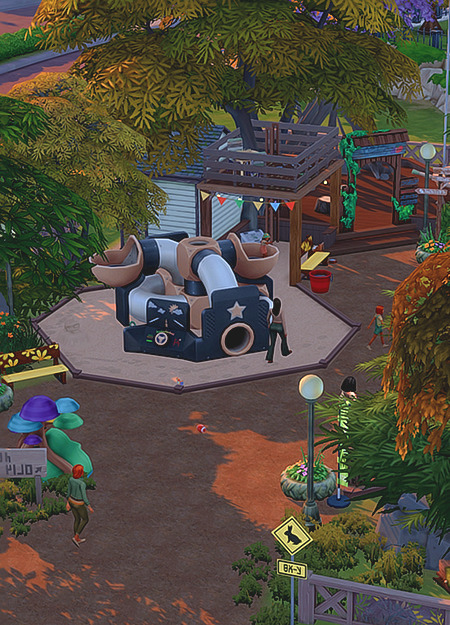









met up with some friends at the park for some lunch & fun! (since the spawn points in del sol valley make it so damn hard for toddlers to make it our house!!)
#so frustrated#ts4#the sims 4#sims 4 gameplay#ts4 vanilla#ts4 vanilla gameplay#simblr#houston: g9#johanna houston#eliana houston#zachary donohue#jagger barfield#raquel bridges#pocketfullofsimshine#the houston legacy
115 notes
·
View notes
Text
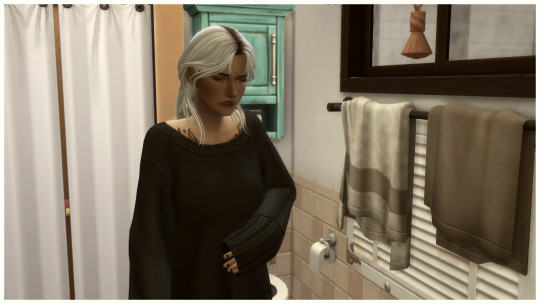

Barfield Legacy
ummmm.... i think some mistakes might have been made.... i swear i didn't do this; it was risky woohoo, not me 🫠
Last Part | Sim Profiles
2 notes
·
View notes
Text
Blue Door ( NARRATIVE DISCOURSE)
Roughly 60 million Americans experience some form of insomnia each year. The number of individuals who receive a visit from three ancestors during a sleepless night struggling with self-identity, however, can be reduced to one fictional character.
From February 4th – 26th, Moxie Theater will feature Tanya Barfield’s play ‘Blue Door’. The play tells the story of Lewis (Vimel Sephus), a tenured mathematics professor, whose intelligence and accomplishments have allowed him to completely assimilate into white culture. Because of this acceptance, Lewis isn’t very connected to his own culture and identity as a black man. This all changes when his white wife leaves him after he refuses to attend the Million Man March in Washington, DC.
During a night of insomnia induced by the sudden end of his 25-year marriage, Lewis is visited by Rex, Simon and Jessie (Cortez L. Johnson), ancestral spirits who remind him of his lineage, who he is in the world today and how that came to be. In Lewis’ encounters with the spirits, many important topics are discussed such as acknowledgement of legacy and the importance of honoring the struggle that has come before the success many African Americans enjoy today.
Delicia Turner Sonnenberg, Artistic Director Moxie Theatre and Director ‘Blue Door’ believes the play will be an expansive viewing experience for audiences.
“We chose Blue Door because one of the ways we fulfill our mission is by changing people’s minds about what women are writing about. Tanya Barfield wrote a play about a man, there are no women in this play,” said Sonnenberg. “Blue Door is an intimate look into one man’s struggle set against the broad backdrop of black male identity in America.”
1 note
·
View note
Photo



Faye (and Jaimie) went to visit Abi and Demi for Thanksgiving
#sims 4 gameplay#simblr#sims 4 legacy#sims 4 legacy challenge#sharp#sharpg2#abi sharp#faye sharp#demi barfield
13 notes
·
View notes
Photo

So, old photo but it’ll do for now. Meet Maeve Mosely. A city native with a love for music and the arts. She’s currently in the political career, but only for the charities. She doesn’t exactly enjoy the politicians.
1 note
·
View note
Link
Since before recorded history, civilizations in the Northern Hemisphere have marked the arrival of winter and the longest night of the year. While in ancient times it wasn’t possible to determine the exact degree when winter officially began. This year, winter solstice occurs exactly on Friday, December 21 at 2:22 PM PST, 3:22 PM MST, or 5:22 PM EST.
The return of the Sun, or “son” in the case of Christmas, marks the winter solstice as a symbol of rebirth and reflection, and has been celebrated in various ways around the world. In Pagan Scandinavia, Yule (or Yuletide), lasted 12 days and each night honored a different aspect of the Triple Goddess and the Sun God. During Shab-e Yalda for Iranians, people gather to protect each other from evil and welcome the triumph of the Sun God Mithra. Before the Chinese New Year Dong Zhi, meaning “Winter Arrives” and is believed to be the only day where everyone gets one year older. The themes of time, darkness, and protection are also themes of the Roman Saturnalia and Christmas’ closest relative.
What is Saturnalia?
In fact, the majority of Christmas traditions evolved from Saturnalia traditions. Saturnalia, named after the God of agriculture and time, it was the most popular Roman holiday known for its riotous ways. Between December 17 and December 24 people exchanged gifts and offered acts of goodwill. Not only were there feasting and dancing but according to writings from several philosophers at the time, many enjoyed major drinking and gambling. So much so that some of them would leave the city, during the week-long festival, even Pliny the Younger whose name doesn’t seem to make it obvious that he was a bit of a Scrooge.
In some parts of Rome, there would even be role reversals where the wealthy would pay for the rents of the poor or children would get to be head of the household. (Um, can we reinstate the rent tradition somehow, pretty please?)
As the Romans began invading the rest of Europe, the traditions of Saturnalia became more of mainstay and evolved into Christmas. Though by the fourth century A.C.E. (after common era), Western Christian Churches decided on December 25 and combined the Pagan midwinter and Saturnalia. Now, we seem to celebrate a bit of a combination of both.
However, in ancient Rome and astrologically speaking, Saturn technically is the reason for the season.
Solstice and Saturn
Winter begins as the Sun moves into the Saturn-ruled, tropical zodiac sign Capricorn. In this way, understanding the archetypal energy of Saturn and Capricorn can help us move into the winter season with more grace and ease.
As the last planet visible with the naked eye, Saturn rules the aspects of the Earthly domain that feel predictable, steady, and ground us in reality. It connects us to slowness and the wisdom that comes with time. Like all planets and signs, Saturn and Capricorn have both positive and negative and reveal themselves differently in different people. In an elevated expression, Saturn sets clear boundaries, commits readily to people and projects, and works hard. Though in its detrimental expression can be overly rigid, judgmental, or cold (like the season itself).
Saturn in our natal astrology chart can give us clues about aspects of our legacy and life purpose while directing us to what we are truly committed to. It moves more slowly than Venus, Mercury, or Mars so it will be in the same place for those born within a few years of each other, though that doesn’t make it less important to individuals. Additionally, those with strong Saturn or Capricorn in their natal chart may recognize the patterns of the season in themselves more so than others. (I’m willing to bet money Scrooge had a strong dose of this in his chart.)
How to Harness Saturn Energy
Behaviors of Saturn pull us into hibernation or isolation though often in service of maturity or grounding. Though Saturn is a dense planet and reminds us of the heaviness and depression that sometimes comes with this season as well. We can also notice its influence when we feel the urge to create more structure or discipline in our lives—such as the case with New Year’s resolutions. Other suggestions for cozying up with Saturn this winter season:
Build an altar to the North, the direction of Saturn, with symbols of the season such as candles, holly, or mistletoe. Because winter solstice was also a time of honoring the rebirth of the Sun, using gold or yellow candles are helpful reminder of this symbolism. Perhaps offering a prayer of rebirth and reflection for the new season.
Practice mountain pose as the foundation of asana practice and for this reason also signifies the grounding and stability of winter. The steadiness of the posture emulates the focus and strength of Saturn itself. Pay extra attention to the feet in this posture as the foot chakra is associated with Saturn.
Learn more about Saturn in your natal astrology chart, specifically if it has major aspects to your Sun or Moon or if have any major transits of Saturn to your chart (and if you don’t what this means, no worries). While the “Saturn Return” has been popularized, be wary of anything you read that makes it seem all doom and gloom. Just like winter, Saturn has both good and bad.
Perhaps Saturn’s greatest gift is that of understanding our legacy as well as what we have inherited from our past. Connecting to the family tree can be a meaningful ritual during this season for revitalizing your ancestral roots. The holidays are often filled with traditions that have been passed down by generation, pause to think about what you want to leave as legacy for your future ancestors.
However you choose to celebrate this Season of Saturn, may it be filled with warmth and internal light on the darkest night.
Holiday special with the author! Two astrology readings for $250, more info here.
—

Rebecca Farrar completed her M.A. at the California Institute of Integral Studies in the Philosophy, Cosmology, and Consciousness (PCC) program. Her thesis was titled “Stargazing: Re-enchantment Through Language,” combining philology, consciousness studies, and enchantment with the stars. She has studied with archetypal astrologer Rick Tarnas, cosmologist Brian Swimme, activist Joanna Macy, and psychotherapist Stan Grof. Other influences include C.G. Jung, Owen Barfield, Bill Plotkin, Marianne Woodman, Thomas Berry, and Clarissa Pinkola Estes. I was also a founding member of Burning Man’s first astrological camp, Cosmicopia. Most recently I am featured in an upcoming documentary Conscious: Fulfilling Our Higher Evolutionary Potential and the She Wolfe Tarot deck. She is a member of the International Society for Astrological Research (ISAR), the San Francisco Astrological Society (SFAS), the Association for the Study of Women and Mythology (ASWM), and the Depth Psychology Alliance (DPA). Follow her on Instagram.
1
The post Winter Solstice 2018: Celebrating the Saturnalia Self appeared first on Wanderlust.
0 notes
Text
Architects and creatives remember "superstar" architect Richard Rogers
Creatives including Peter Barber, Charles Holland and Julia Barfield are among those to have paid their respects to Pritzer Prize-winning architect Richard Rogers, who passed away this weekend at the age of 88.
British-Italian architect Rogers, one of the world's leading architects, is best known for his iconic high-tech architecture including the Centre Pompidou and Lloyd's building.
His death in London on Saturday evening was confirmed to the New York Times by his son Roo Rogers and on the website of his studio, Rogers Stirk Harbour + Partners (RSHP).
"Rogers was the most fantastic bloke"
Tributes to Rogers flooded social media over the weekend, led by fellow Pritzker Architecture Prize-winner Norman Foster who said the architect was his "oldest and closest friend".
"Richard Rogers was a great pioneering architect of the modern age, socially committed and an influential protagonist for the best of city life – such a legacy," Foster said.
Among the others mourning his loss were British architects Barber and Barfield, who are both former employees of RSHP, then Richard Rogers Partnership (RRP).
Above: Norman Foster (left) with Richard Rogers (middle). Image courtesy of Foster + Partner
"Richard Rogers was the most fantastic bloke….he really was….so charming and charismatic. He was very very kind to me," Barber wrote on Twitter.
Barfield, the co-founder of Marks Barfield Architects, said finding out the news was "such a sad day".
"Richard's generosity of spirit and breadth of vision are my enduring memory - it made working in RRP in heady days of Inmos & Lloyds so exciting & fun," she added.
"I was so proud to have met him"
Current RSHP partner Tracy Meller said: "we have lost a great friend, architect and inspirational leader".
"His legacy lives on in all of us lucky enough to have worked with and learnt from him," she shared on Twitter.
Writer and PR Rob Fiehn, who also formerly worked at Rogers Stirk Harbour + Partners as media coordinator, said it was "difficult to explain what it was like to work for Richard Rogers".
"I'm pretty sure he's the only starchitect who regularly took part in the inter-practice softball league," he wrote on LinkedIn.
"He put people at the heart of studio life and it resulted in some groundbreaking architecture," he said. "I hope we can all learn from that."
Rogers is the architect behind The Lloyd's building in London. Photo is by Richard Bryant, courtesy of arcaidimages.com
Photographer Jim Stephenson also recalled Roger's generosity, while taking to Twitter to share stills from a film he made with him several years ago.
"Richard Rogers was so open from the moment he walked over until the moment we had everything we needed (and more)," Stephenson said.
"I was so proud to have met him and spend that short time with him. Complete superstar."
"He was one of the world's most influential architects"
Another key figure to pay their respects was the mayor of London, Sadiq Khan, who said he was "terribly saddened to learn of the death of Richard Rogers".
"He was one of the world's most influential architects and the brilliant mind behind some of London's most iconic buildings."
Architectural academic Eamonn Canniffe said Rogers' work was "full of joy", while The Design Museum said it "helped change London".
"We are sorry to hear of the loss of Richard Rogers, a brilliant architect and friend of the museum," the museum shared on Twitter.
"He designed some of the great buildings of the twentieth century, and helped change London, both as an architect and an urban thinker. He leaves behind an incredible legacy."
Peter Rice, Renzo Piano and Richard Rogers at the Centre Pompidou. Photo is by Tony Evans
Writer and curator Vicky Richardson said that while Rogers' death was "a huge loss" for the industry, it was "also a chance to celebrate a heroic life".
"Richard Rogers was a true humanist who transformed architecture, cities and public life," she added.
"He shaped a generation"
Grimshaw principal Angela Dapper and Charles Holland were two other architects who took to Twitter to pay tribute.
"Just today I was giving the kids a city tour and was telling them how inspirational his buildings were," Dapper said. "He shaped a generation of architecture and architects - and will always be an inspiration."
"What a remarkable life," wrote Holland, the principal of Charles Holland Architects. "The Pompidou Centre and the Lloyds building are two of the most brilliant and audacious buildings ever."
Read:
Richard Rogers is high-tech's inside-out architect
Insurance company Lloyd's of London, which occupies Rogers' iconic high-tech Lloyd's building in London, said that it was "extremely saddened by the passing of Richard Rogers".
"Tomorrow, as a mark of our deep respect, we will remember Richard's life and ring the Lutine Bell, an emblem of Lloyd's he was known to love," the company wrote on Twitter, referring to a bell salvaged from HMS Lutine that is now used for ceremonial purposes at their headquarters.
Rogers proved dyslexia "wasn't a barrier in design"
The news of Rogers' death also saw his scornful school report from the Architectural Association in 1958 recircle on social media, in which it was declared that the architect's entry into the fourth year was "not successful".
Architect and researcher Marianna Janowicz said: "I remember seeing [the report card] at the RA show and feeling reassured".
Read:
Norman Foster pays tribute to his "oldest and closest friend" Richard Rogers
Designer Adam Nathaniel Furman added that Rogers, who was dyslexic, "inspired those of us who navigate the world with dyslexia to see that it in itself wasn't a barrier in design".
Writer and editor Hugh Pearman also hailed Rogers' achievements, despite these barriers.
"A dyslexic kid who came late to literacy, was never much good at drawing and always struggled to express himself verbally," Pearman wrote.
"What a career in architecture and politics, what a life, what great parties."
The portrait of Rogers is by Andrew Zuckerman, courtesy of RSHP.
The post Architects and creatives remember "superstar" architect Richard Rogers appeared first on Dezeen.
0 notes